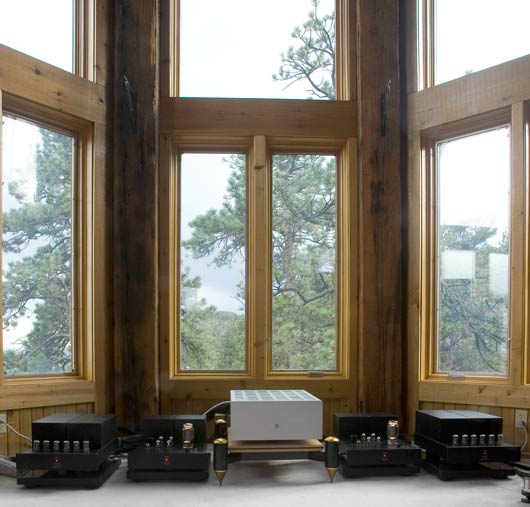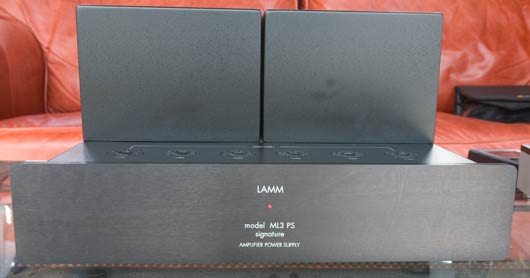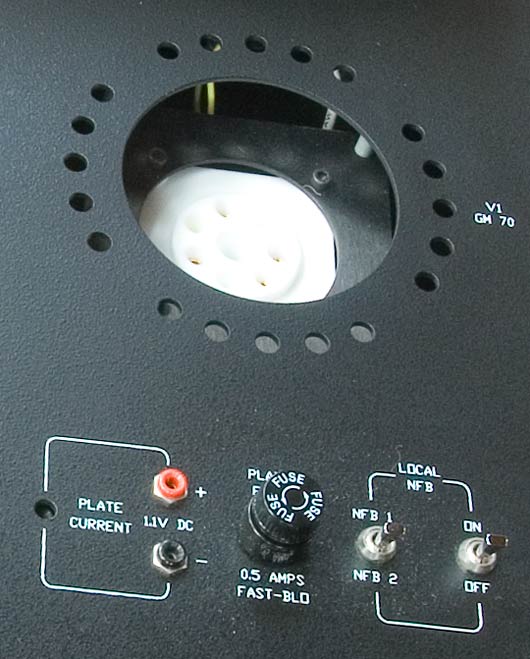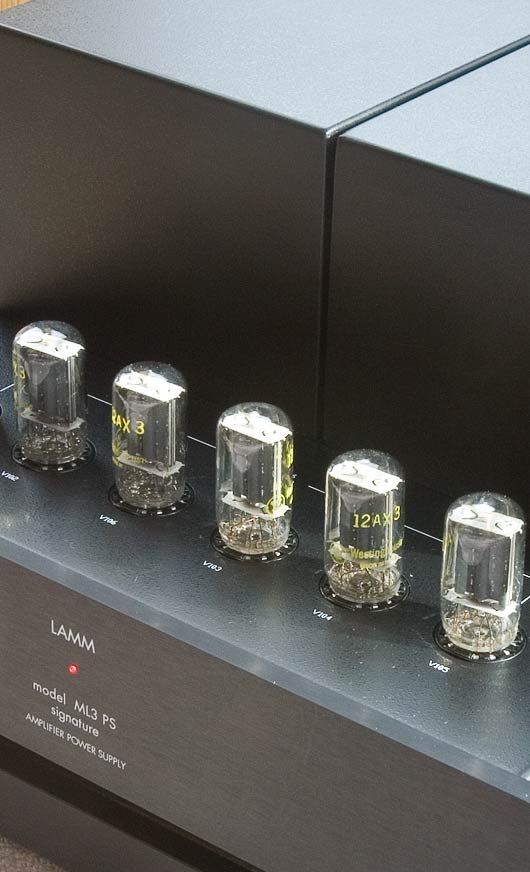Lamm Industries generously loaned us a pair of ML3 amps for the Rocky Mountain Audio Fest – and we got them setup and they were warmed up enough for listening last night.
We did most of our listening on the Brinkmann Balance turntable, since the Emm Labs TSD1/DAC2 digital is still breaking in. Even so, we are running it through the Emm Labs DCC2 DAC’s linestege as we wait for our Audio Note M9 and Lamm L2 preamps to arrive.
I spent a lot of our listening time comparing these to the big Audio Note amps: The Kegon Balanced and Ongaku.
For now, my matchbook cover, over simplification of the difference is this:
Our friend Dave Cope once described the top flight Audio Note amps [and specifically the M10 linestage] as drill-sergeants – they are so intent on controlling each note with an iron [titanium] grip.
Well, in comparison with the Lamm, the AN primarily controls the MACRO dynamics with an iron grip, and leaving the micro-dynamics to be slightly less controlled [in comparison with the Lamm] and the Lamm controls the MICRO dynamics like nobody’s business [as Neli would put it], and the macro-dynamics is less controlled [in comparison with the AN]. Get it? They are PRIMARILY focused on different parts of the dynamic spectrum – not that they don’t control all parts of the dynamic spectrum better than any other amps out there, because they do. It is just that their APPROACH to the reproduction of the sound is different from each other.
So with these ML3’s, you can hear WAY into the music, the details are very, very three dimensional, the micro-harmonics incredibly varied and complex, the micro-separation really excellent.
For example, on Stevie Ray Vaughn’s Tin Pan Alley LP, the Lamm ML3 had an ability to convey how HARD each note was played on the guitar [which I grew up with and play on and mostly off – so I can hear rightness better than say, Neli :-)] not primarily through the different levels of dynamic punch, but because you could HEAR that the string was stretched and hear the pick as it slid rapidly and with great force across the string as it was picked. So this resulted in a sound that just whacked the listener across the ears – sometimes it sounded like that guitar string would BREAK if Stevie kept doing that – which is just like it is supposed to sound on those particular notes.
So this was a case where something that might be considered macro-dynamic was clearly rendered perfectly by the ML3. That is why I talked about how, using this hypothetical model of the two amps, their PRIMARY focus seems to be on different areas of the dynamic spectrum – but that this is just their APPROACH to the sound, that they still dominate all areas and aspects of the reproduction in ways that will take quite some time to understand [probably longer than the two weeks or so we get to hear these particular amps] .
[P.S. Neli tells me to post that she thinks that I am not being enthusiastic enough about the amps… not the Lamm nor the Audio Note. I guess I am being very analytical but I do have to focus mightily on understanding the sound so I can try and describe it in these clumsy words we all communicate back and forth with – and maybe I am just tired of the very, very long reviews that I read – when I read any at all these days – that, for their extreme, time-wasting length, are nothing really but vacuous cheerleading at best and disingenuous brown-nosing more often than not.
Hopefully describing WHY these are great amps speaks louder than “OMG Best Amp/Speaker/Digital Ever!!!” (… even though in these particular cases they, in all likelihood, ARE the best… ;-))
It is like, I imagine our very friendly, intelligent and passionate hypothetical readers to say “OK Mike, we have read and surfed our fingers to the bone and it seems like there is nothing out there that is not ‘The Best’. Now you say that these are the best. Now, describe WHY and HOW they are the best. And describe for us how they are different from all the other bests and second bests you have there. ….. And, only if you must, just briefly describe how these bests are better/different than the ‘stuff’ that other reviewers, dealers and manufacturers swear up and down are the ‘best’… but JFYI you can skip the comparisons with Bose”)
If any of you very friendly, intelligent and passionate hypothetical readers want to add to that, please let us know].
OK… photos:

The system all setup

Warming up

At night. Those GM70 tubes are quite bright.

Earlier in the day, the ML3 front

The ML3 rear

Closeup of the rear

The ML3 power supply front

The ML3 power supply rear

The ML3 power supply rear closeup

The ML3 without tubes

Closeup of the socket for the GM70 tube and the controls for feedback etc.

Some photos of the amps while warming up





Closeup of the glow of the ML3’s GM70 vacuum tube

























